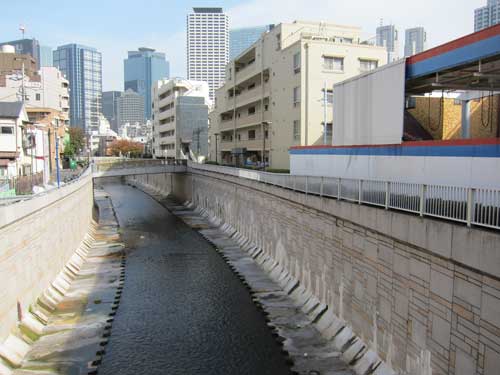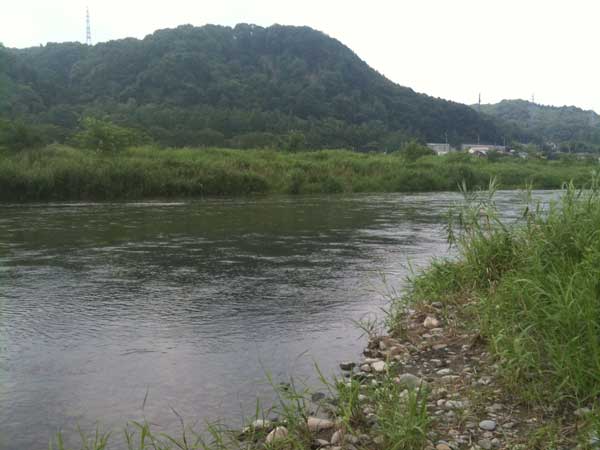
西東京の三川における、江戸時代にさかのぼる歴史や街と街をつなげる緑や洪水対策の仕組みが観察できます。
Along three western Tokyo rivers you can see Edo history, green corridors, and flood control.
On Linus Yng’s @ArchitourTokyo Western Tokyo bike exploration, we passed three contrasting rivers. The first is a view of the Kanda (神田川) from Yamate Dori (山手道り), with Nishi Shinjuku in the background. Many people have explained to me that the deep channeling is designed to prevent flooding. But it seems nonsensical to me that the entire river, include its bed, must be hard surface with no plant life. Closer to the skyscrapers, I regularly bike along the Kanda at night on the way to my favorite sento, and often hear ducks and other birds. It’s amazing how resilient urban wildlife is, despite our worst actions.
The second image is one of the few remaining, visible portions of the Tamagawa josui (玉川上水). Both the Kanda and the Tamagawa josui were human constructed canals built during the early Edo period to direct fresh water to the castle in the center of Tokyo. This was a massive project with 50 kilometers of canal dug through woodlands, at some points up to 18 meters below ground. This project supplied freshwater to the city, and turned the outer woodlands into productive farm land.
The last image is of the Zenpukuji River (善福寺川), which like the Kanda begins at a natural spring, and flows into the city center. This river has been turned into a very attractive park and green corridor running through much of Suginami. I was fascinated that many recreational facilities, including baseball fields and tennis courts, also serve as flood reservoirs. You can see how the water will flow directly into the sunken sports area in the photo at the bottom.





